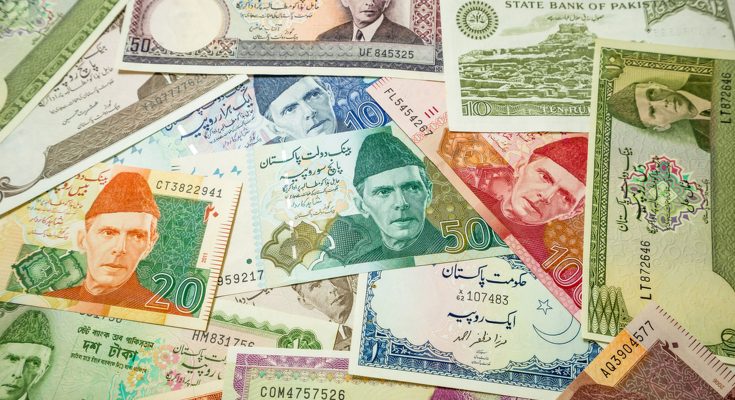The State Bank of Pakistan (SBP) unveiled a new PKR 75 banknote in an effort to do something special to commemorate Pakistan’s 75th Independence Day. The public issuance of the PKR 75 note will reportedly begin on September 30, 2022, as per the central bank’s Twitter account.
Emerald green dominates the note’s overall color scheme, with lighter green, white, and grey accents shown in the video up top.
Meanwhile, a picture of Markhor appears on the note’s reverse to highlight the significance of preserving natural resources. The commemorative banknote, which was introduced on August 14, 2022, is still being discussed online, despite garnering largely negative feedback from internet users.
Pakistanis use their country’s cash on a daily basis in different fields like park view Islamabad real estate project, but few of them stop to consider the country’s monetary history or the variety of images depicted on the banknotes they handle. It’s possible, then, that you don’t know the history of Pakistani currency or understand why its current structure emerged.
The design and printing of our currency notes are the results of a lengthy history of careful and consistent work. Each coin in circulation today is the result of years of refinement. From its inception in 1947 up until the present day, we’ll cover the evolution of Pakistan’s currency here. What is printed on the reverse of our monetary notes and coins will also be discussed.
It was not possible to quickly establish a central banking system in Pakistan due to the country’s status as a newly independent nation. Therefore, plans were established for the Reserve Bank of India to supply Pakistan with money following the country’s foundation.
After 1947
Therefore, the Indian Rupee was the first money used in Pakistan. The words “Government of Pakistan” were printed in English on the black section of the note, while the words “Hakumat-e-Pakistan” were printed in Urdu on the white part of the note, which acted as the watermark.
Until September 30th, 1948, the Reserve Bank of India was designated as the only authority for issuing money in both India and Pakistan. A year was allotted for the Pakistani government to establish a banking system and a printing press.
In the wake of Pakistan’s State Bank’s inception
On October 1, 1948, banknotes in 5, 10, and 100 Rupee denominations were released for circulation by the State Bank of Pakistan. The British firm of Bradbury Wilkinson & Company handled the printing of these items. The Khyber Pass appeared on the back of the five rupee note, while the Makli Tombs were featured on the back of the ten rupee note. Due to the first design being deemed unacceptable, the first 100-Rupee note wasn’t released for circulation for another couple of years. Print or watermark, the crescent moon, and star were used on these early notes to represent Pakistan.
It wasn’t until 1956 that the Cabinet learned about the counterfeit, prompting a new series to be created using a portrait of Muhammad Ali Jinnah. The 50-Rupee note, 500-Rupee note, 5-Rupee note, and 10-Rupee note all appeared before the year 1970 was out.
After The Separation Of East Pakistan
After East Pakistan broke apart, many of the images and Bengali language on the notes were no longer relevant, so a new series of Pakistani currency was created for circulation. Introduced in May of 1974, the 1-Rupee note was the series’ starting point. It was a vibrant blue colour and featured text in the four most common regional tongues. This notice didn’t last long because it was written in several dialects, which could cause friction in the population.
Money Notes Issued Between The Years 1970 And Early 2000
A brand-new 1-Rupee note entered circulation in April 1975, and subsequent denominations of 5, 10, and 100 were created the following year. Following that was the 50-Rupee note, which entered circulation toward the year’s conclusion in 1977. It wasn’t until April of 1986 that the 500-Rupee note became available, while the 2-Rupee note was made available for usage in August 1985. If you are living in the United States here is a guide about Mcallen craigslist buying and selling.
However, it was decided to rebuild the notes with cutting-edge security features once new methods were available to protect the currency even further. A picture of Mohenjo-Daro appeared on its back when it was originally a brown color. While the 1- and 2-Rupee notes were retired in favor of coins, the rest of the series saw a redesign. Similarly, the 5-Rupee note was demonetized later that same year.
This denomination appeared for the first time ever in Pakistani currency
Prior to 1960, 1 Pakistani Rupee was divided into 16 ana, with each ana consisting of 4 paisa.
After 1960, 1 Pakistani Rupee has 100 paisa in it because the country switched to the metric system for its currency. In those days, you could buy things with coins of 1, 2, 5, 10, 25, and 50 paisa. Another monetary denomination in circulation, the 10-Rupee coin, sees very limited use.




